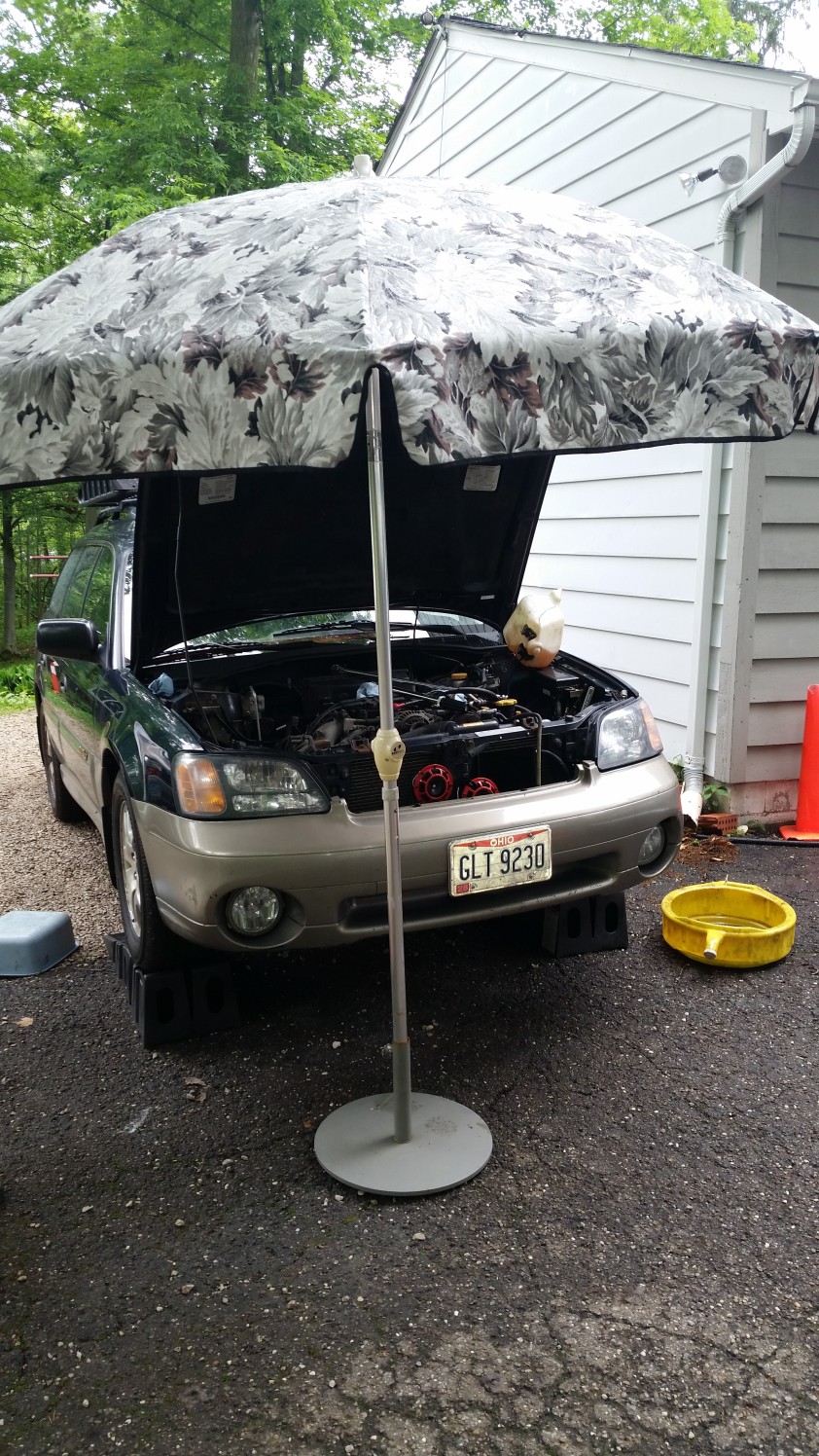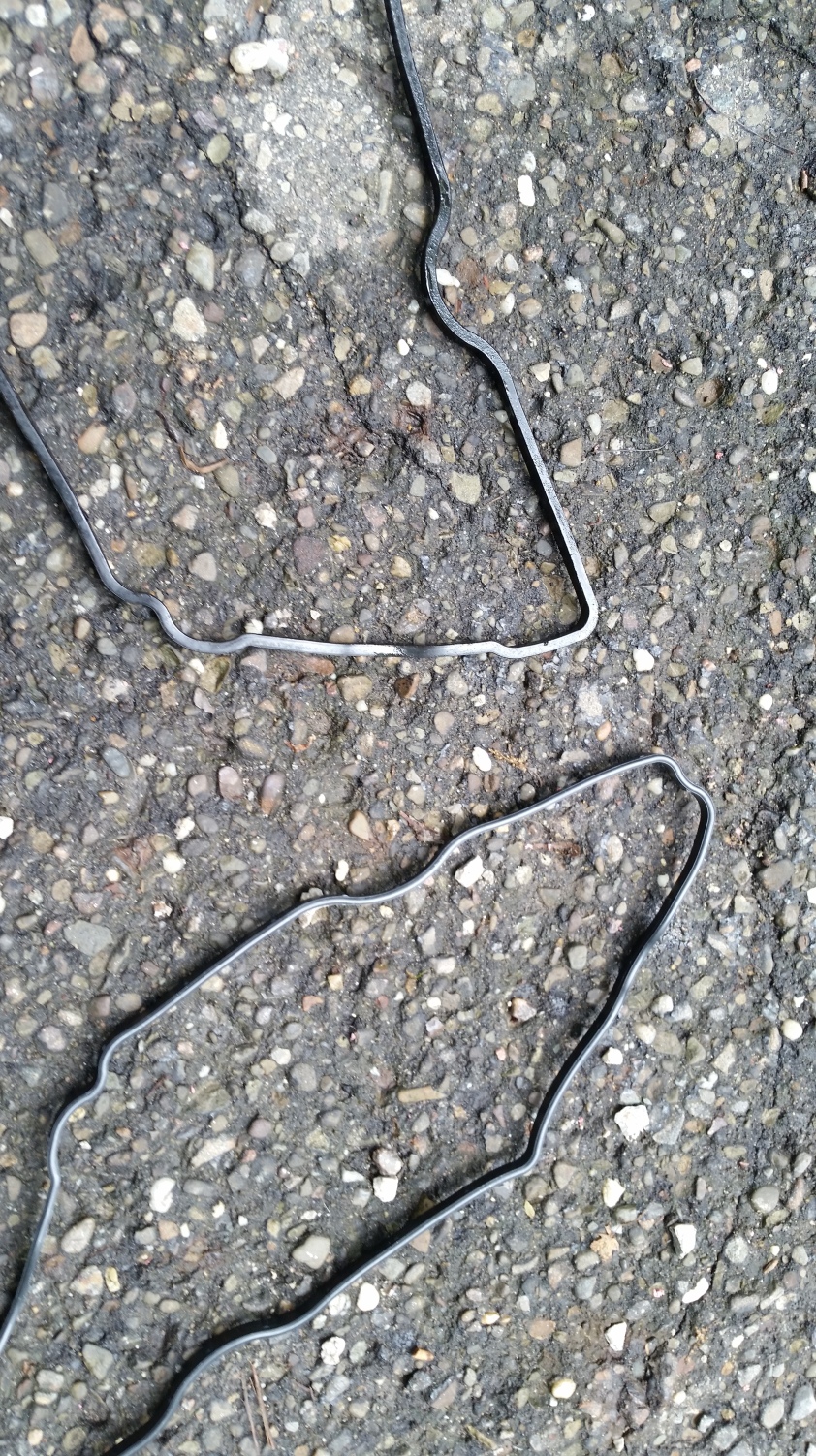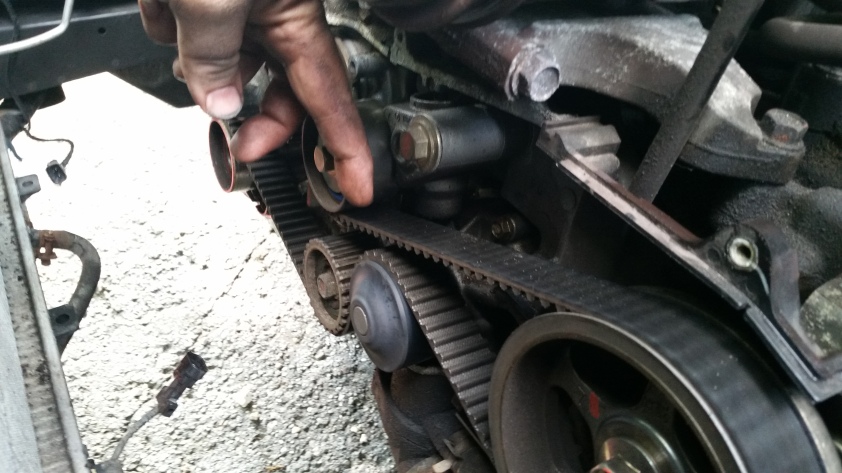Recently, the Subaru got a SLEW of work done to it. I was checking through the CarFax service records and noticed that a timing belt change was not listed. While not all service is going to show up on the CarFax, this belt is vital to the engine as it ensures all mechanical components are spinning at the same rate, or “in time.” The belt for the car is meant to last 105,000, which is a LONG service life… but the Outback hit 183,000 miles a week ago. So if this belt was never replaced, that means the engine could catastrophically fail while running at any time… which is, as they say, no bueno.
THUSLY:
I ordered a new timing belt as part of the huge parts order I placed back in week 2 of owning this car, but hadn’t figured on a certain time by which to do the repairs and maintenance those parts are for… until I realized the TB might be super old and past its maintenance interval. Therefore, I set out to figure out how to replace it, along with a bunch of other work… after setting up my all-weather workspace:
1) the first engine oil change on this car by me: I added some Seafoam to the oil and drove the car gently for 7 minutes, to work its cleaning power through the oil system. The noteworthy detail here: this car is ABSURDLY easy to change the oil on, unlike a certain Volkswagen in my life.
2) front differential oil change: power to the wheels requires some gears to spin; gears require oil changes over time as grit and metal detritus is created. Not sure if or when it was last changed, but the magnetic drain plug had accumulated a LOT of sludge over time. I am glad to have it running clean, lean, and mean once again!
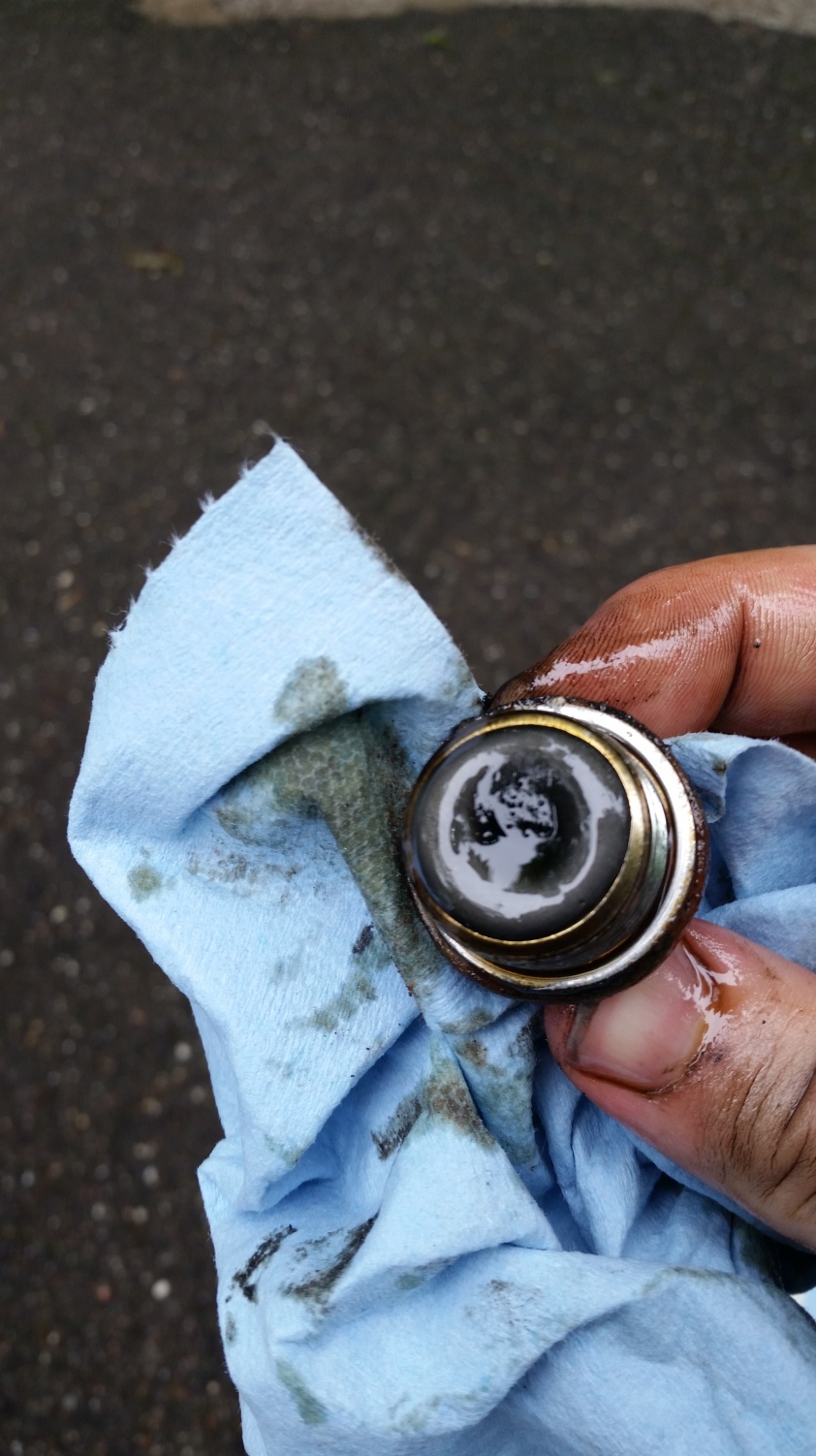
The silvery rounded end to the cap… is metallic sludge accumulated over tens of thousands of miles of use!! Very glad I cleared it, and the old gear oil, out of the system.
3) rear differential oil change: … and since the Outback is an all wheel drive car… the rear axles get power and have the same situation as the front. And just like the front… the rear magnetic drain plug had accumulated its own concerning level of sludge.
4) valve cover gaskets: the valves in the engine require oil to stay lubricated… but the gasket on the big rectangular covers eventually go bad and allow oil to leak. Problem solved!
5) spark plug gaskets: situated in between the valves, the spark plugs don’t do well if doused in the oil cascading around the valves. When I did the spark plug replacement on this car over a month ago… the old plugs were definitely doused, so I knew that the gaskets for the spark plug tubes were bad. New ones in, old and flattened ones out!
6) water pump and thermostat replaced: coolant is needed throughout the engine, and the water pump is what moves it (convection be damned); the thermostat helps regulate the flow based on temperature. These parts ought to be replaced with the timing belt, and in fact the pump is one of the gears turning with the belt, so it would have been crazy to not replace at the same time as the TB.
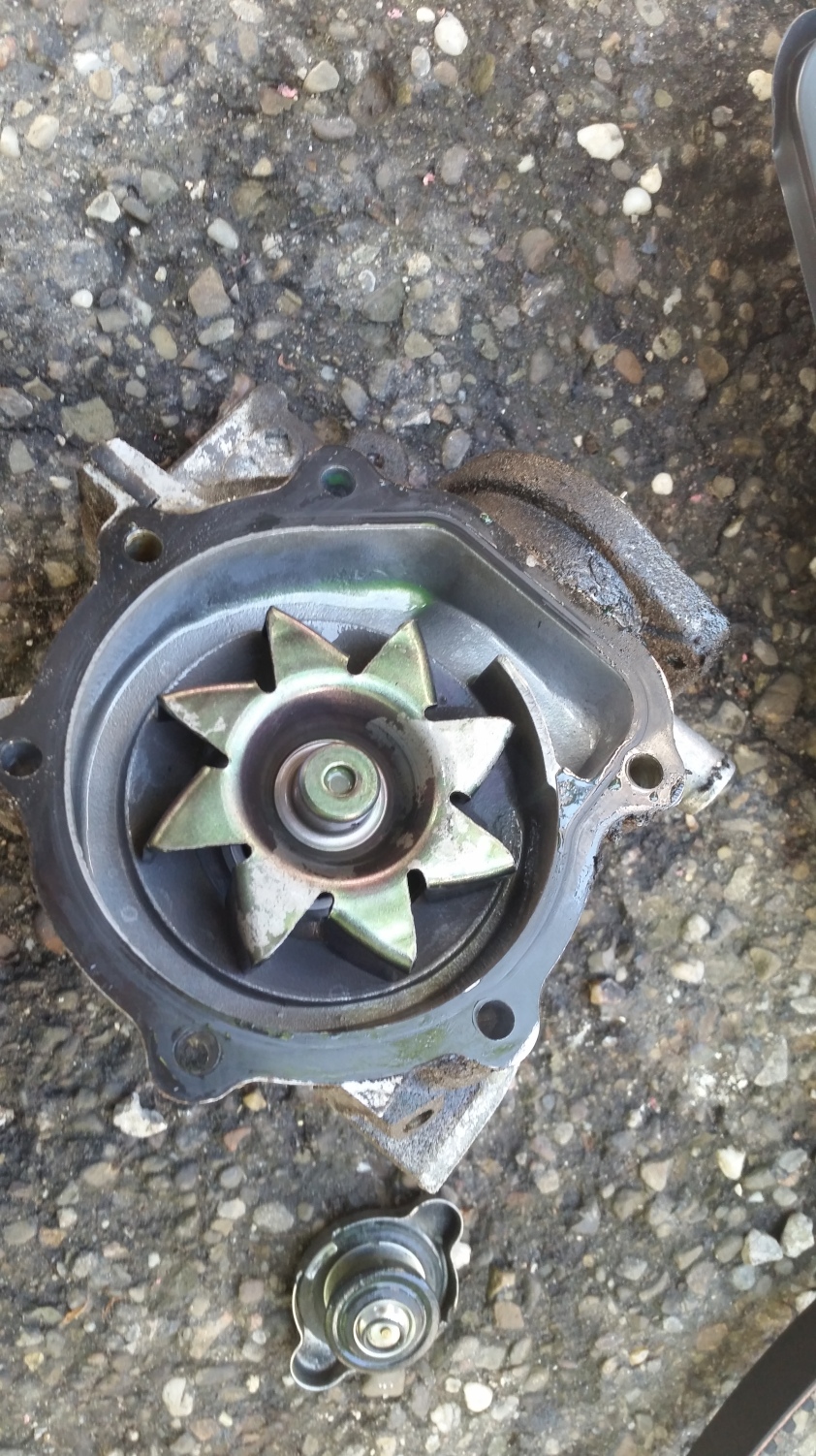
Old water pump, the vanes were just beginning to wear… but it is always a good idea to change this along with the timing belt, so you KNOW it is done
7) timing belt replaced: the Big Enchilada, as they say. A bunch of engine components need removal to be able to access this sanctum sanctorum of engine parts, which I figured out how to do. Once I got the old belt exposed…
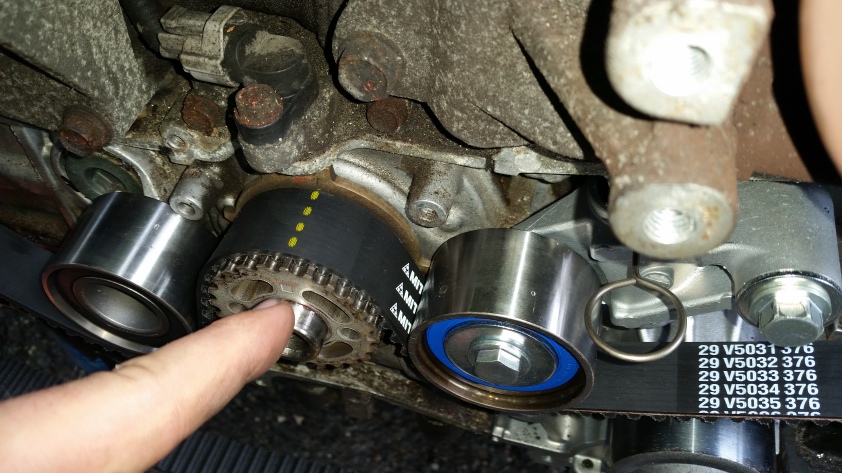
Lining up the new timing belt markings are VITAL to avoid catastrophic engine damage when test-starting it. No pressure.
… I replaced the waterpump (above) and all the old pulleys, as well as the tensioner – part of a healthy and long-lived timing belt is good components to hold it to correct tension and allow it to easily roll along its mechanical path.
8) new spark plug wires: As one of the spark plug wires had broken internally, making a bad connection…
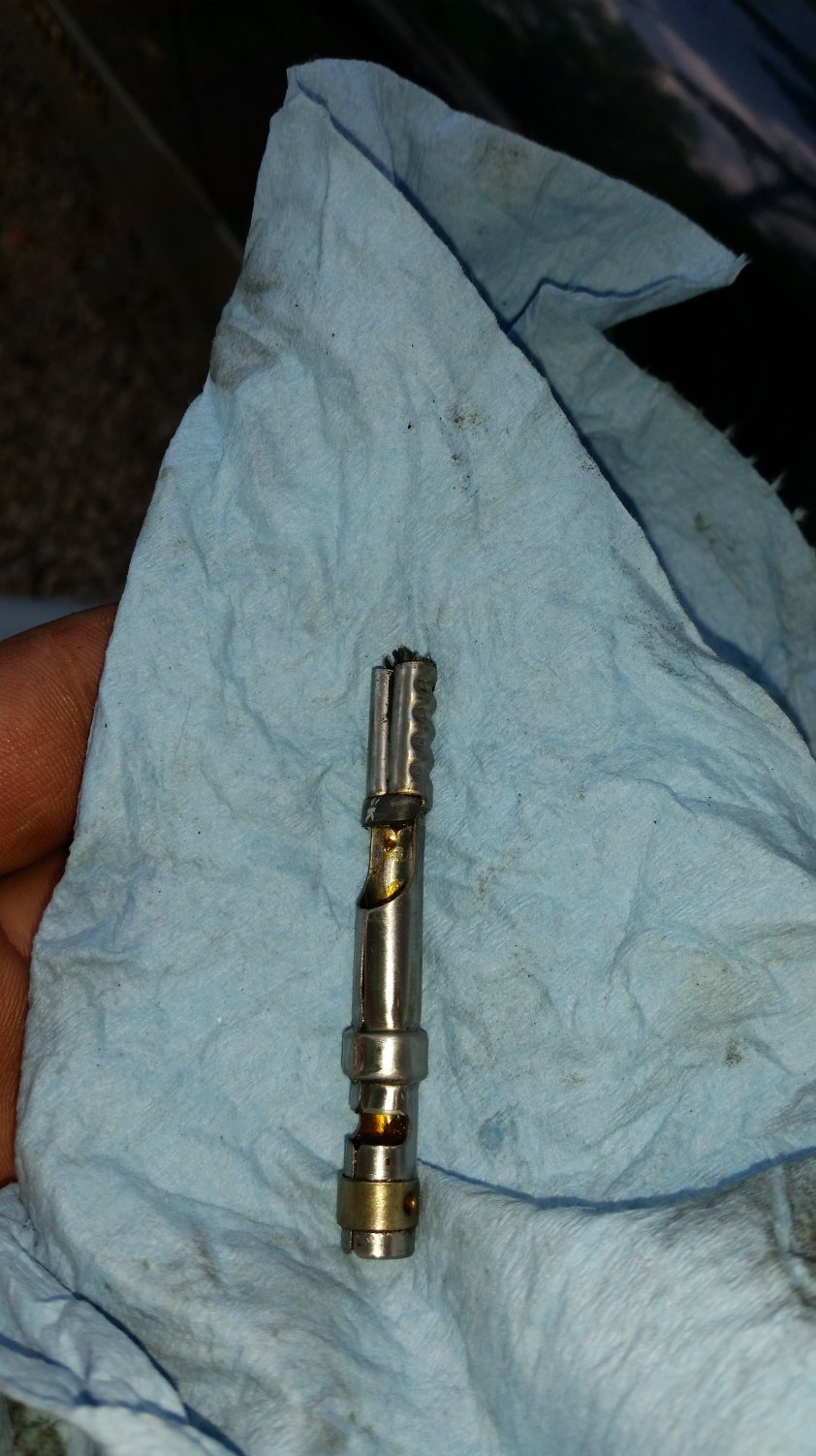
The internal part of the spark plug wire, I am sure it wasn’t great for the engine to have one cylinder with such an intermittent connection
… new wires for the whole car. Also, given that I do not know when last this was done, this was worthwhile maintenance anyways.
9) cleaning the Idle Air Control Valve (IACV) and replacing the gasket and O-ring: a less intuitive part, this sensor and valve helps regulate the air flow to the engine when the car is idling, and has a poorly-designed gasket (they eventually deform to the point that the car will stall itself while idling). Again not knowing if or when this was done, and wanting the car to last me a long time… I will dive into this easy project (unlike the majority of the above, this part is RIGHT THERE atop the engine, easy to reach, easier to clean and refurbish) once I am back from Haiti —-> see the next post for details!

